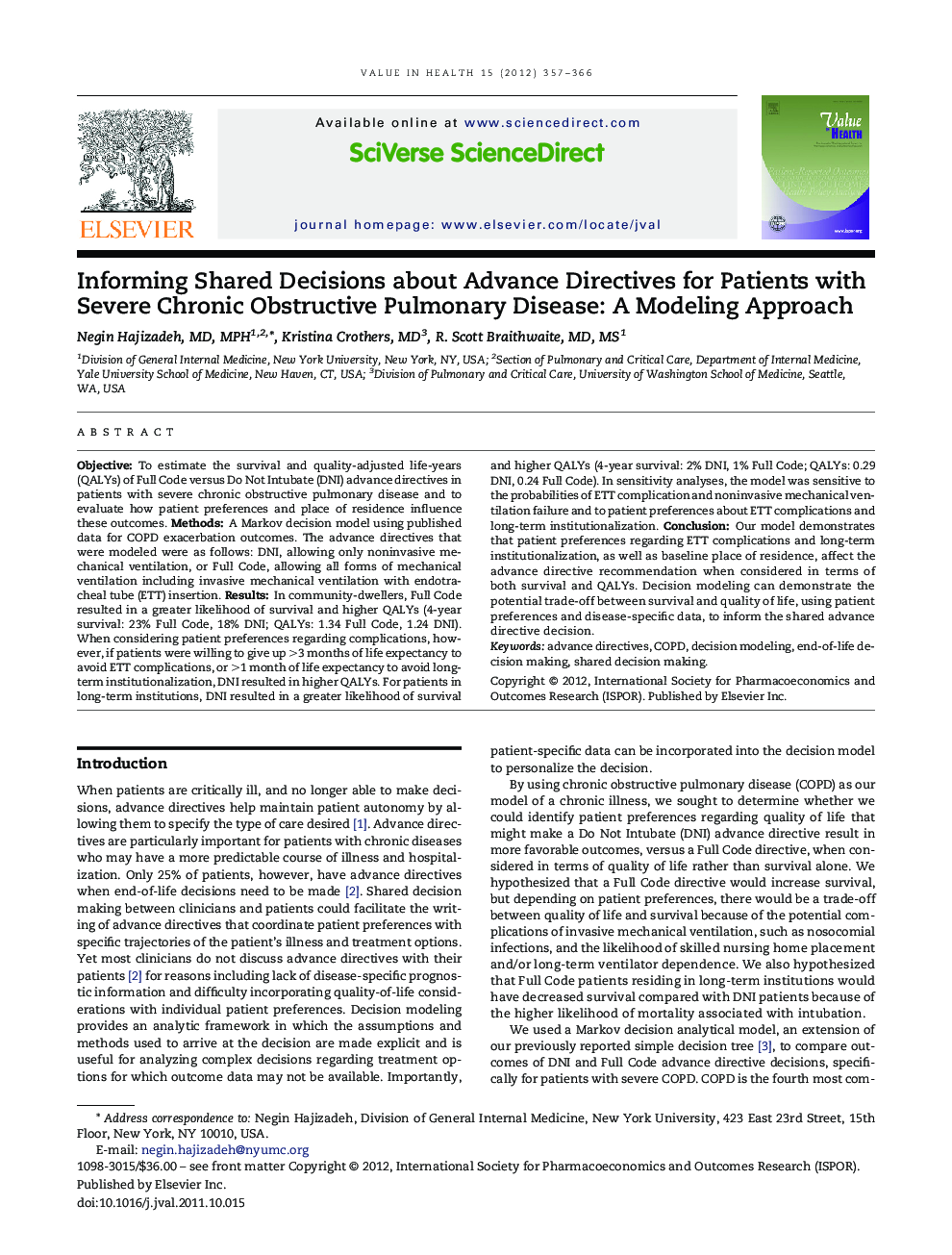| کد مقاله | کد نشریه | سال انتشار | مقاله انگلیسی | نسخه تمام متن |
|---|---|---|---|---|
| 988578 | 935351 | 2012 | 10 صفحه PDF | دانلود رایگان |
ObjectiveTo estimate the survival and quality-adjusted life-years (QALYs) of Full Code versus Do Not Intubate (DNI) advance directives in patients with severe chronic obstructive pulmonary disease and to evaluate how patient preferences and place of residence influence these outcomes.MethodsA Markov decision model using published data for COPD exacerbation outcomes. The advance directives that were modeled were as follows: DNI, allowing only noninvasive mechanical ventilation, or Full Code, allowing all forms of mechanical ventilation including invasive mechanical ventilation with endotracheal tube (ETT) insertion.ResultsIn community-dwellers, Full Code resulted in a greater likelihood of survival and higher QALYs (4-year survival: 23% Full Code, 18% DNI; QALYs: 1.34 Full Code, 1.24 DNI). When considering patient preferences regarding complications, however, if patients were willing to give up >3 months of life expectancy to avoid ETT complications, or >1 month of life expectancy to avoid long-term institutionalization, DNI resulted in higher QALYs. For patients in long-term institutions, DNI resulted in a greater likelihood of survival and higher QALYs (4-year survival: 2% DNI, 1% Full Code; QALYs: 0.29 DNI, 0.24 Full Code). In sensitivity analyses, the model was sensitive to the probabilities of ETT complication and noninvasive mechanical ventilation failure and to patient preferences about ETT complications and long-term institutionalization.ConclusionOur model demonstrates that patient preferences regarding ETT complications and long-term institutionalization, as well as baseline place of residence, affect the advance directive recommendation when considered in terms of both survival and QALYs. Decision modeling can demonstrate the potential trade-off between survival and quality of life, using patient preferences and disease-specific data, to inform the shared advance directive decision.
Journal: Value in Health - Volume 15, Issue 2, March–April 2012, Pages 357–366
